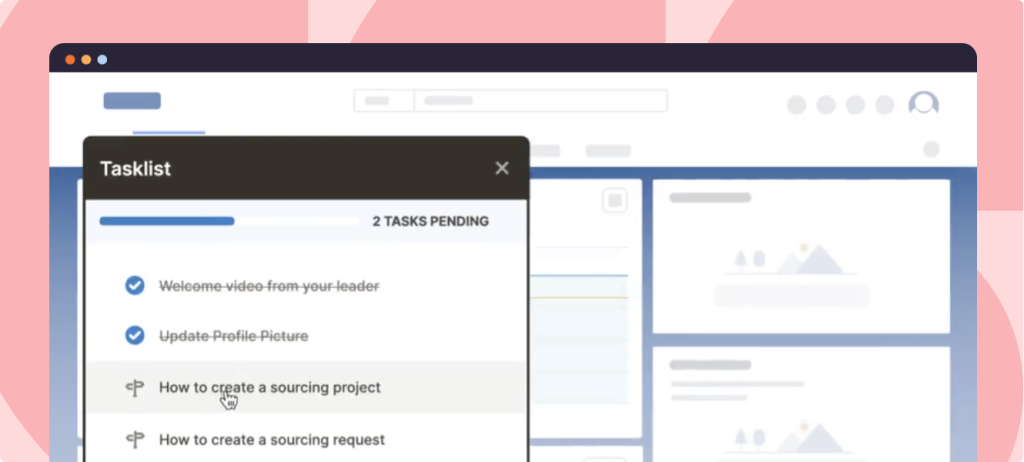In the realm of education, a growing emphasis is being placed on adopting instructional approaches that cater to the diverse needs and preferences of learners. Training programs must cater to visual, auditory, and kinesthetic learners, among others, to ensure that participants receive content that aligns with their preferred learning style, maximizing engagement and comprehension.
One such approach that integrates multiple sensory channels to engage learners and enhance their understanding and retention of information is multimodal learning. This article explores the concept of multimodal learning, its benefits, and practical strategies for implementing it in educational settings. By harnessing the power of multiple modalities, L&D teams can create dynamic and inclusive learning experiences for their workforce and facilitate comprehensive learning outcomes.
What Is Multimodal Learning?
Multimodal learning is an instructional approach that utilizes multiple sensory modalities to enhance the learning experience. It recognizes that individuals have different learning styles and preferences and, therefore, incorporates a combination of visual, auditory, kinesthetic, and other interactive elements to engage learners and promote a deeper understanding of the information. By presenting information through various modes, multimodal learning aims to cater to the diverse needs of learners and optimize comprehension, retention, and application of knowledge.
What Is the VARK Model?
The VARK model by Neil Fleming classifies learner preferences into four basic categories – visual, auditory, reading/writing, and kinesthetic (VARK) and is the birthplace of the multimodal learning concept. Each learning style represents a preferred mode of receiving and processing information.
VARK is a valuable model for developing multimodal learning material. The four learning modes can be used individually or in conjunction to produce maximum impact. Visual learners benefit from visual aids such as charts, diagrams, and images. Auditory learners prefer learning through listening, discussions, and lectures. Read/write learners prefer written material, such as textbooks and training manuals. Kinesthetic learners thrive through hands-on activities and experiential learning.
The VARK model helps individuals identify their dominant learning styles and guides educators in designing instructional approaches that align with diverse learning preferences.
4 Types of VARK Learning Styles
Here is a breakdown of each of the four VARK styles of multimodal learning:

1. Visual learning
Visual learning involves learning by seeing. This mode of learning uses visual cues such as infographics, graphs, illustrations, videos, diagrams, and flowcharts – anything that primarily stimulates your learners’ eyes. Techniques such as color coding information, using different fonts, and labeling important points with stickers are all a part of visual learning.
2. Auditory learning
Auditory learning focuses on training learners via audio inputs. Auditory learning can be incorporated into a training program via podcasts, face-to-face learning, group discussions, interviews, and audiobooks.
3. Reading & writing learning
As the name suggests, reading and writing learning mode involves learning via written or printed medium. This type of learning is the most traditional of the four and may be included as a part of text-based training content. Books, eBooks, documents, PDFs, and written tests are common ways to include the reading and writing learning mode in a training program.
4. Kinesthetic learning
The kinesthetic learning style involves learning through activity. This learning mode may be incorporated into training in the form of an on-site visit, a product demo, or a multimedia slide-deck presentation. The kinesthetic mode is usually used with other learning modes, such as visual and auditory, to provide an in-depth learning experience.
Criticisms of VARK Learning Styles
While the VARK learning styles model has been widely utilized and has its merits, it has also faced some criticisms. Here are some of the most common criticisms of the VARK model:
- Oversimplification: Critics argue that the VARK model oversimplifies the complexities of learning styles by categorizing individuals into four distinct categories. However, human learning is a multifaceted process, and individuals often exhibit a combination of learning preferences rather than fitting neatly into one category.
- Limited focus on context and content: Critics argue that the VARK model does not sufficiently consider the influence of contextual factors or the specific content being learned. Learning preferences may vary depending on the subject matter, the complexity of the content, or the individual’s prior knowledge and experience.
- Inadequate attention to individual differences: The VARK model focuses primarily on sensory preferences (visual, auditory, etc.) and does not comprehensively address other individual differences, such as cognitive styles, personality traits, or cultural backgrounds, which can influence learning preferences and outcomes.
- Fixed mindset and stereotyping: Some critics argue that the VARK model can lead to a fixed mindset and reinforce stereotypes about individuals’ abilities and preferred learning styles. It may inadvertently limit learners’ perceptions of their own potential and discourage them from exploring other learning strategies.
Benefits and Outcomes of Multimodal Learning
Multimodal learning provides the most suitable learning solutions for learners with multiple learning styles. Some of the major benefits of multimodal learning include:
1. Drives engagement
Engaging multiple senses through visuals, audio, and interactive elements stimulates cognitive processes and enhances attention and focus. This multisensory approach captures learners’ interest, making the training more engaging.
2. Improves understanding and retention of information
Multimodal learning presents information through different modalities, such as visuals, auditory cues, and hands-on activities. Reinforcing the same content through multiple channels enhances memory retention and comprehension. Furthermore, it allows learners to make connections between visual representations, verbal explanations, and real-world applications. These connections enhance the organization of knowledge, making it easier to understand, remember, and retrieve information when needed.
3. Caters to different learning styles and preferences
Multimodal learning acknowledges and accommodates diverse learning styles and preferences, including visual, auditory, and kinesthetic. Presenting information through multiple modalities ensures that learners with different preferences are actively engaged and can process information in ways that resonate with them.
4. Promotes creativity and critical thinking skills
Multimodal learning involves interactive elements, simulations, and experiential activities that encourage learners to explore and experiment with the content. This hands-on approach allows learners to discover new connections, test hypotheses, and think creatively to solve problems. It nurtures a mindset of curiosity and experimentation, fostering creative and critical thinking skills.
6 Examples of Multimodal Learning
Here are some examples of real-world multimodal learning concepts in practice.
1. Interactive quizzes
Interactive quizzes are great ways to engage employees and measure training effectiveness. Including interactive quizzes after every learning module tests employees to ensure they understand the completed training content. Here are some ideas for incorporating interactive quizzes into multimodal learning:
- Multimedia quiz: Quiz questions that incorporate multimedia elements to engage multiple senses. For example, an image or video clip that asks learners to identify specific details or analyze the content. This approach reinforces visual learning and encourages critical observation and analysis.
- Audio-based quizzes: Quizzes where learners listen to recordings or dialogues and answer questions based on what they hear. This approach enhances auditory learning and listening comprehension skills. You can include multiple-choice, fill-in-the-blank, or matching questions based on the audio content.
- Interactive drag-and-drop quizzes: Quizzes where learners match items or concepts with corresponding images or descriptions. This interactive format encourages hands-on engagement and kinesthetic learning while reinforcing connections between elements.
- Scenario-based quizzes: Present real-life scenarios or case studies and ask learners to analyze the situation, make decisions, or identify the best course of action. This type of quiz promotes critical thinking, problem-solving skills, and the application of knowledge in practical contexts.
- Gamified quizzes: Incorporate gamification elements into quizzes to enhance engagement and motivation. Use features like timers, points, leaderboards, and rewards to create a competitive and interactive learning environment.
- Collaborative quizzes: Implement team-based quizzes where learners work together to answer questions and discuss their responses. This encourages communication, cooperation, and the exchange of ideas among learners.
- Reflective quizzes: Quizzes that encourage learners to reflect on their own learning and evaluate their progress. Includes questions that prompt self-assessment, self-reflection, or open-ended responses. This approach helps learners develop a deeper understanding of their learning experience.
2. Case studies
Case studies use real-world examples to introduce complex concepts. They expose learners to actual situations, simplify understanding of concepts, and promote healthy discussions. Case studies also provide a framework for your employees to handle similar situations in the future.
Here are some ideas for incorporating case studies into multimodal learning:
- Visual case studies: A visual case study includes images, charts, or diagrams. Ask learners to analyze the visuals, identify patterns or trends, and draw conclusions based on the information presented.
- Audio-based case studies: An audio recording or interview is presented as a case study. Learners can listen to the recording, extract key information, analyze the content, and respond to questions or prompts.
- Problem-solving case studies: Present a problem or challenge that requires learners to analyze the situation, identify relevant information, and propose solutions.
- Role-play case studies: Learners act out different roles or characters, engage in discussions, and make decisions based on their assigned perspectives.
- Simulation-based case studies: Utilize simulation software or virtual environments to create immersive case studies. Learners can navigate through simulated scenarios, make decisions, and experience the consequences of their actions.
3. Gamification
Gamification in training involves introducing learning concepts in the form of educational games. Games use multimodal modes simultaneously, significantly enhancing the learning experience and engagement. Introducing gamification within employee training programs makes learning fun, interactive, entertaining, and competitive.
Here are some ideas for implementing gamification in multimodal training:
- Progression and levels: Create a sense of progression by dividing the training content into levels or stages. Learners can unlock new levels by completing activities, quizzes, or modules.
- Points and leaderboards: Assign points or scores to learners based on their performance. Create leaderboards to display the top performers or teams. This fosters competition and motivates learners to participate actively.
- Badges and achievements: Award digital badges or achievements to recognize learners’ accomplishments. These badges can represent milestones, skills acquired, or completed modules.
- Time-based challenges: Time-based challenges add excitement and a sense of urgency. This encourages quick thinking, decision-making under pressure, and efficient use of time.
- Interactive quizzes and games: Incorporate multimedia elements, such as visuals, audio, and videos, to create engaging quiz formats like multiple-choice questions, drag-and-drop activities, or memory-matching games.
- Team-based challenges: Implement collaborative challenges that require learners to work in teams. This fosters cooperation, communication, and shared decision-making.
4. Scenario training & role-playing
Scenario training and role-playing are highly effective techniques for multimodal training as they immerse learners in realistic situations, encourage active participation, and facilitate the integration of various modalities. Simulating on-the-job situations is important as the 70-20-10 model indicates that most learning happens through real experiences.
Here’s how scenario training and role-playing can be incorporated into multimodal training:
- Design realistic scenarios: Develop scenarios that closely resemble real-world situations relevant to the training content. These scenarios present challenges or problems that learners will likely encounter in their roles. Relatable scenarios will make learners more deeply engaged with the content.
- Assign roles and characters: Assign learners specific roles or characters within the scenarios. This can involve role-playing as employees, customers, or other stakeholders. Assigning roles allows learners to embody different perspectives, facilitating empathy and understanding of different viewpoints.
- Encourage dialogue and discussion: Facilitating dialogue and discussion among learners during the scenario allows them to actively engage with the content, share ideas, and consider different perspectives.
5. Storyboarding
Storyboarding is an effective technique for planning and organizing multimodal training materials. It involves creating a visual roadmap that outlines the sequence of content, modalities, and interactions within the training.
Here’s how storyboards can be utilized for multimodal training:
- Identify learning objectives: Define the specific training objectives and outcomes you want to achieve through multimodal learning. This will guide the development of the storyboard and ensure that it aligns with the desired goals.
- Determine modalities: Decide on the modalities you intend to incorporate into the training, such as visuals, audio, text, videos, or interactive elements.
- Divide content into sections: Divide the training content into sections or modules based on the learning objectives. Each section addresses a specific topic or concept to ensure clarity.
- Sketch visual elements: Create visual sketches or representations of the content. This includes images, graphics, charts, or diagrams supporting the key messages or concepts.
- Determine audio elements: Specify any audio elements accompanying the training, such as voice-over narration, background music, or sound effects.
- Plan interactivity: Determine where interactive elements will be integrated within the training. This includes quizzes, simulations, drag-and-drop activities, or other interactive components.
- Define navigation and user experience: Consider the user experience and navigation flow within the multimodal training. Determine how learners will progress from one section to another, how they can access additional resources or support, and how to revisit or review specific content if needed.
- Seek feedback and iteration: Share the storyboard with relevant stakeholders, such as subject matter experts or instructional designers, to gather feedback and suggestions for improvement. Iterate and refine the storyboard based on feedback to ensure alignment with the learning objectives and effective multimodal delivery.
6. Think-pair-share
Think-pair-share is a collaborative training strategy that can be effectively incorporated into multimodal learning to engage learners, promote critical thinking, and encourage active participation.
Here’s how to implement think-pair-share for multimodal learning:
- Introduce the topic: Begin by introducing the topic learners will explore through multimodal learning. Provide an overview of the content and set clear objectives for the think-pair-share activity.
- Think: Give learners time to think individually about the topic. During this phase, they can review relevant multimodal materials, such as visuals, texts, or videos, to gather information and develop their own thoughts and ideas.
- Pair: Pair the learners with their respective partners.
- Share: Learners share their thoughts, ideas, and findings with each other. They discuss multimodal materials, exchange insights, and explore different viewpoints. This sharing phase promotes collaboration, critical thinking, and the synthesis of ideas.
- Group discussion: After the pair-sharing phase, bring the whole group together for a larger discussion with a training facilitator. Encourage learners to share key insights, unique perspectives, and new understandings with the group.
- Reflect: Conclude the think-pair-share activity by allowing learners to reflect on their learning experience. Ask them to individually reflect on the insights gained from the activity, how their understanding evolved, and any further questions or areas for exploration.
Challenges and Considerations of Multimodal Learning
While beneficial and effective, multimodal learning also presents certain challenges and considerations. Here are some key challenges and considerations to keep in mind when implementing multimodal learning:
1. Resource constraints and technology integration
Implementing multimodal learning requires access to various resources, such as technology, multimedia materials, or physical materials for hands-on activities. Availability and affordability of these resources can pose challenges, particularly for organizations or institutions with limited budgets or technological infrastructure.
Additionally, ensuring seamless technology integration, troubleshooting technical issues, and providing adequate training and support for learners and facilitators can be a significant challenge.
2. Addressing individual student needs and accommodations
Learners have diverse preferences and learning styles. Designing and delivering multimodal learning experiences that cater to a broad range of preferences can be time-consuming for training managers.
3. Content relevance and integration
It is important to ensure that multimodal learning content is relevant, aligned with learning objectives, and integrated effectively. Simply incorporating multiple modalities without careful consideration of their purpose and how they support the learning goals can lead to cognitive overload or disjointed learning experiences.
How to Take a Multimodal Learning Approach in Your Training
The VARK learning styles are simple to build into your organization’s L&D training programs. Here are some important tips to keep your L&D content approachable and engaging through multimodal learning.
1. Invest in eLearning tools
Implementing quality online learning tools is essential for organizations investing in employee development and training programs. These tools help create, curate, and assign employee development and training course content – as well as monitor and track both progression and effectiveness of the learning content.
There are many platforms aimed at empowering L&D teams to create highly effective and engaging learning content for employee onboarding, development, and training purposes. The most impactful employee training software include:
- Corporate Learning Management Systems (LMS) – Provides HR and L&D teams the tools to train employees through custom course creation. These systems provide progress tracking, course organization, and training management features to scale training and development across the company.
- Digital Adoption Platform – A digital adoption platform (DAP) is an employee training solution that integrates with digital tools to provide automated, personalized training in the flow of work. DAPs assign each learner a contextual task list containing interactive walkthroughs and other in-app content based on the learner’s profile. Walkthroughs are a series of step-by-step prompts that show users how to complete a certain process by guiding them through each step, showing them relevant training videos, or providing informative articles to incorporate different learning styles. DAPs work hand-in-hand with learning management systems (LMSs) and eLearning software like xAPI and SCORM for you to track learners’ progress and build more relevant content in the future.
- Content Authoring Software – eLearning content authoring tools enable instructional designers to create and develop training content, such as eLearning modules, videos, quizzes, and interactive presentations. These tools offer templates, multimedia integration, assessment builders, and publishing capabilities to produce engaging and interactive training materials.

2. Create multimedia learning content
Repurpose your current learning content by converting it into different multimedia formats such as voice records, voice-over screen shares, PDFs, slide decks, and more. This is a great first step that provides a multimodal boost to your company’s training efforts.
Video-based learning is proven to enhance the learning process, with statistics showing it leads to faster and longer retention of information. Videos demonstrate complex concepts and ideas in a simple, visual manner. They also offer more opportunities for learners to engage with the content being presented.
While video may seem daunting, many easy-to-use tools empower training professionals without video experience to create effective training videos for their employees easily.

Above: Example of embedding videos in your employee onboarding training for new software applications with Whatfix.
3. Track the effectiveness of different learning types
It is important to continuously track and monitor the effectiveness of various modes of training used in your learning courses to improve continuously. Assessing each user’s learning preferences and receptivity to the variety of content presented allows you to redesign your course content for a better experience in the future.
4. Avoid learner overload
Remember not to throw too much at your employees too fast. Overloading your workforce with too much learning and development content is detrimental to information retention, negatively affects productivity, and can cause team members to give up on completing important training tasks.
5. Gather learner feedback
One of the best ways to check if your multimodal learning content strategy is effective is to periodically check in with your workforce, understand how information is being retained, and survey learners to gather data on the satisfaction of L&D programs.
Asking learners how a course can be better structured gives you insight into a learner’s mind and preferences. This data helps redesign the course content for better receptivity and enhances the learning experience. This also allows you to build learning profiles that provide data on different types of learners’ characteristics, empowering you to create templated training courses for different learning personalities.

Above: Example of gathering immediate learning feedback with Whatfix.
6. Take a blended learning approach
Blended learning combines the best of two training environments – traditional face-to-face learning and eLearning – to meet the evolving needs of new-age learners. Blended learning software takes learning outside the classroom walls, making it possible to access resources both online and offline. This helps engage all types of learners – those who learn better in a traditional classroom environment and those who work best with semi-autonomous, computer-based training. While classroom learning offers an opportunity for immediate face-to-face interaction, online learning offers self-paced learning with interactive media such as games, videos, tutorials, quizzes, etc., all accessible from the learner’s home page in a learning management system (LMS).
Learning Clicks Better With Whatfix
Digital adoption platforms (DAPs) are powerful tools that support and enhance multimodal learning. By centralizing content delivery, offering personalized learning paths, and incorporating interactive and engaging elements such as interactive walkthroughs, embedded videos, in-app knowledge bases, and more, DAPs create a seamless and dynamic learning experience for learners.
Schedule a free demo with us today to learn more about Whatfix training solutions!














